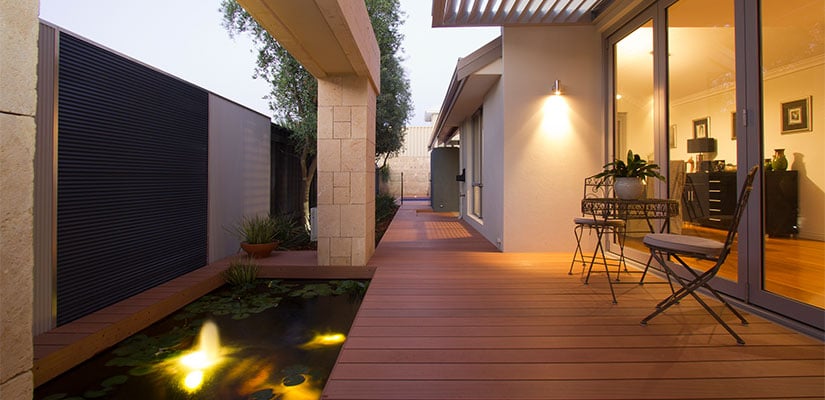Composites: The Future of Lasting Building Products
Composites: The Future of Lasting Building Products
Blog Article
Unlocking the Ecological Advantages of Recycled Compounds in Building And Construction and Style
In the realm of building and construction and layout, the utilization of recycled composites holds considerable pledge for boosting sustainability methods and minimizing ecological effect. The change in the direction of a much more lasting future in these sectors hinges on unlocking the complete capacity of recycled composites.

Ecological Influence Decrease
The reduction of environmental impact via the usage of recycled compounds in building and design plays a critical duty in sustainable practices. By incorporating recycled compounds right into building products, the building and construction market can substantially reduce its carbon footprint and contribute to a more environment-friendly future. These lasting materials, made from repurposed plastics, wood fibers, or various other recycled components, use a feasible option to standard building products without jeopardizing on high quality or durability.
Recycled compounds help divert waste from landfills and decrease the demand for removing basic materials, hence saving natural deposits. Additionally, the production procedure of these composites frequently takes in less energy and releases fewer greenhouse gases compared to creating virgin products (composites). This change towards utilizing recycled composites not only minimizes environmental harm however additionally promotes a round economic climate by motivating the reuse of products that would certainly or else be thrown out
Waste Reduction
With a concentrate on lessening waste in building and construction and design, the assimilation of recycled composites provides a sustainable remedy to minimize environmental influence. Waste minimization is a critical facet of sustainable techniques, and making use of recycled composites offers a possibility to accomplish this goal properly. By making use of materials that have actually currently offered their preliminary function, such as recycled plastics or reclaimed wood fibers, the building and construction and layout sectors can dramatically minimize the quantity of waste produced and sent to landfills.
Recycled composites have the prospective to divert significant amounts of waste from conventional disposal methods, adding to a much more circular economic situation where sources are utilized effectively. In addition, the production process of recycled composites usually consumes much less power and creates less emissions contrasted to virgin materials, additionally reducing the environmental footprint of construction and design projects.
Applying waste reduction strategies through the incorporation of recycled composites not just helps in saving natural deposits but likewise advertises a much more lasting approach to building and making for a greener future.
Power Preservation
Including recycled composites not only lessens waste in construction and design but also plays a critical function in improving power preservation methods within the industry. Making use of recycled compounds in building can significantly add to power preservation through different methods. Firstly, the production of virgin products commonly requires considerable power inputs, whereas utilizing recycled compounds takes in much less energy, thereby minimizing general energy usage. Additionally, including recycled composites can add to much better insulation buildings in buildings, reducing the requirement for excessive home heating or cooling, and subsequently reducing energy use for environment control. Moreover, the light-weight nature of several recycled compounds can lead to lighter structures, calling for less power for transportation and installation. By advertising using recycled composites in building and layout, the market can make significant strides in the direction of accomplishing power efficiency and lowering its carbon footprint, eventually adding to a more lasting developed setting.
Carbon Footprint Decrease
Enhancing sustainability techniques via the use of recycled compounds in building and construction and layout dramatically lowers the carbon impact of the market. By integrating recycled products right into the manufacturing of compounds, the requirement for virgin sources lowers, causing reduced energy consumption and greenhouse gas discharges connected with standard production procedures. This decrease in carbon footprint is vital in combating climate adjustment and advertising an extra environmentally friendly strategy to building and style.
In addition, the usage of recycled composites also aids in drawing away waste from landfills, thereby minimizing the environmental impact of disposal and advertising a circular economic climate. The carbon footprint decrease achieved with the fostering of recycled composites straightens with the worldwide click resources press towards lasting practices and the reduction of commercial emissions. It showcases a dedication to responsible resource monitoring and a shift in the direction of greener alternatives in the building and construction and style sectors. Eventually, by focusing on the combination of recycled compounds, the industry can make substantial strides in lowering its carbon impact and adding to a much more lasting future.
Lasting Future
The assimilation of recycled composites in construction and style not only addresses prompt ecological worries however additionally lays a solid structure for a lasting future in the sector. By including recycled compounds into structure products and products, the building and construction and style fields can dramatically decrease their dependence on virgin resources, bring about a more round economy. This shift in the direction of sustainability is important for mitigating the ecological influence of standard building and construction methods, which usually lead to high levels of waste generation and source deficiency.

Conclusion
Finally, recycled composites use substantial ecological benefits in building and layout by decreasing environmental effect, decreasing waste, preserving energy, reducing carbon footprint, and advertising a lasting future. Accepting the usage of recycled composites can add to a more environmentally-friendly approach to structure and click this link layout, eventually causing a much more sustainable and greener future for all.
The reduction of ecological effect with the use of recycled composites in building and construction and layout plays a crucial duty in lasting methods.With a focus on lessening waste in building and design, the assimilation of recycled compounds provides a sustainable service to reduce ecological effect. By promoting the usage of recycled compounds in building and design, the sector can make considerable strides towards achieving power effectiveness and reducing its carbon impact, ultimately adding to a much more sustainable constructed atmosphere.

Report this page